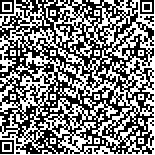本文已被:浏览 292次 下载 228次
Received:October 01, 2022 Published Online:June 20, 2023
Received:October 01, 2022 Published Online:June 20, 2023
中文摘要: 目的 总结儿童肾脏病并发可逆性后部脑病综合征(PRES)的临床特点,以期早预防、早诊治、改善预后。 方法 对河南中医药大学第一附属医院儿科2015—2022年确诊的肾脏病并发PRES患儿的临床特点、辅助检查、用药情况及预后进行回顾性分析并复习相关文献。 结果 纳入肾脏病并发PRES患儿13例,男9例,女4例;年龄3~14(8.38±3.36)岁。发病前有感染症状10例,血清白蛋白水平低于正常值10例,伴有不同程度高血压4例,使用糖皮质激素(GC)联合免疫抑制剂治疗10例,GC治疗2例,免疫抑制剂治疗1例。临床表现主要为癫痫发作、意识障碍、恶心呕吐、头晕头痛、眼部不适,病灶多分布在双侧额叶、顶叶、颞叶、枕叶皮质及皮质下。治疗后临床及影像学表现在短期内可恢复正常。 结论 肾脏病相关PRES患儿发病与GC及免疫抑制剂治疗有关,使用环脂肽类抗生素、低蛋白血症、高血压等均有可能增加患病风险。PRES病程可逆,预后良好,但延误治疗可进行性加重,甚至造成不可逆性颅脑神经损害。
Abstract:Objective To summarize the clinical characteristics of posterior reversible encephalopathy syndrome (PRES) in children with renal disease in order to provide reference for early prevention, diagnosis and treatment and improving prognosis. Methods A retrospective analysis was conducted on the clinical characteristics, auxiliary examinations, medication use and prognosis of children with renal disease complicated with PRES confirmed in the First Affiliated Hospital of Henan University of Chinese Medicine from 2015 to 2022, and the relevant literatures were reviewed. Results Thirteen children aged 3 to 14 (8.38±3.36) years old were enrolled, including 9 males and 4 females. There were 10 cases (76.92%) of infection before the onset of the disease, 10 cases (76.92%) of lower serum albumin levels than normal, 4 cases (30.77%) accompanied by varying degrees of hypertension, 10 cases (76.92%) treated with glucocorticoids (GC) combined with immunosuppressive agents, 2 cases (15.38%) treated with GC and 1 case (7.69%) treated with immunosuppressive agents. The main clinical manifestations were seizures, disturbance of consciousness, nausea and vomiting, dizziness, headache and ocular discomfort. The lesions were mostly distributed in bilateral frontal lobe, parietal lobe, temporal lobe, occipital cortex and subcortex. After treatment, the clinical manifestations and imaging findings returned to normal in a short period of time. Conclusion The incidence of PRES in children with renal disease is related to GC and immunosuppressive therapy, and cyclic lipopeptide antibiotics, hypoproteinemia and hypertension may increase the risk of disease. PRES usually is reversible and has a good prognosis, but delayed treatment can worsen progressively and even cause irreversible craniocerebral nerve damage.
keywords: Children Kidney disease Posterior reversible encephalopathy syndrome Immunosuppressive agents Glucocorticoids Hypertension Albumin Infection
文章编号: 中图分类号:R747.9 文 文献标志码:B
基金项目:国家自然基金面上项目 (81873339); 中华中医药学会团体标准项目 (20210908-BZ-CACM)
引用文本:
